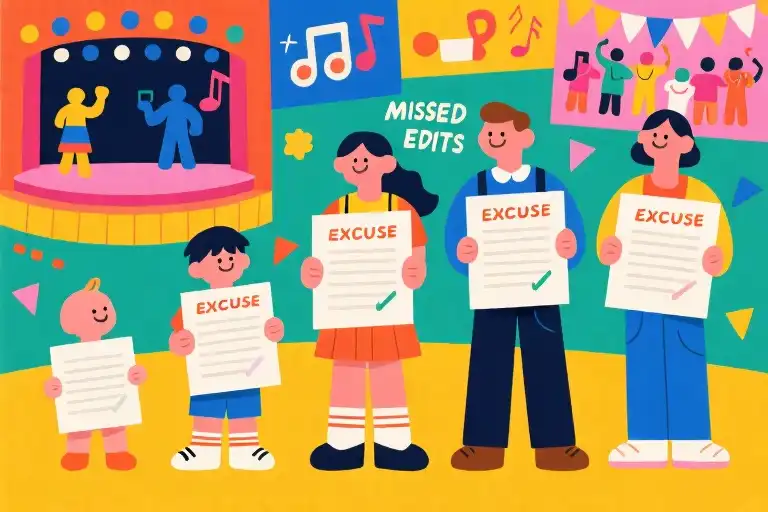The first light of dawn filters through the curtains, painting delicate patterns on the sleeping face beside you. In this quiet hour when the world hasn’t yet begun its daily clamor, your fingers hover inches above their cheek—close enough to feel their breath, yet suddenly unsure if you should bridge that distance. That familiar question surfaces again, pressing against your ribs like a second heartbeat: Do you love me, or the ghost of someone I remind you of?
Morning has always been the most honest time. Before coffee rituals and work emails, before the protective layers of daily routines, there’s just this raw space where truths emerge uninvited. You study the curve of their eyelashes against their skin, the way their hand rests palm-up between you—an unasked question. The same hand that might have cradled another’s face in different mornings, under different sunlight.
Psychology tells us these twilight moments between sleep and wakefulness activate our most primal emotional centers. The amygdala doesn’t distinguish between past and present heartbreaks; it simply reacts. That’s why the scent of their shampoo at dawn can suddenly transport you to their ex’s Instagram photos from three years ago. Why a half-remembered dream about their college sweetheart feels more real than your five-year relationship.
“We don’t fall in love with people,” a therapist once told me over chamomile tea, “we fall in love with the way they organize our loneliness.” And therein lies the rub—when you suspect your partner might still be alphabetizing their solitude using someone else’s filing system.
This isn’t about jealousy. It’s about the fundamental human need to occupy space in someone’s life as your authentic self, not as a skillful impression of their history. The difference between being someone’s destination versus a scenic detour on their way elsewhere.
Consider the case of Elena, a 29-year-old architect who discovered her fiancé kept his ex’s letters in the same drawer as their wedding plans. “It wasn’t the physical objects that hurt,” she confessed during our interview, “but how casually he’d say ‘That’s just how I am’ when I asked why he needed them. As if my discomfort was an unreasonable reaction to his normal.”
Or Marcus, who realized his boyfriend of two years still used his ex’s Netflix profile. “Every time I’d see that name pop up on our screen, I’d wonder—am I watching our relationship through someone else’s algorithm?”
These stories reveal the core wound of placeholder love: not that someone came before you, but that you might be living in the after. The terrifying possibility that your most intimate moments—whispered secrets, inside jokes, the way you cry during dog food commercials—are being unconsciously compared to someone else’s archived version.
Yet here’s what morning light also teaches us: Shadows only exist where there’s illumination. To examine these fears isn’t weakness—it’s the bravest form of emotional archaeology. Because the answer to “Am I truly loved?” won’t be found in their past, but in how they choose to honor your present.
Transition: “So we become relationship archaeologists—not to dig up buried loves, but to uncover how much of their heart is truly available in the now.”
The Dawn of Doubt: When Morning Light Reveals Emotional Archaeology
There’s a particular quiet that settles in the hour before sunrise, when the world hasn’t yet decided to wake. It’s in these fragile moments that the mind plays its cruelest tricks—whispering questions we’d rather not hear. Did his fingertips memorize someone else’s silhouette before tracing yours? When he says your name, does his tongue remember shaping another’s? These aren’t jealous fantasies, but the legitimate concerns of anyone who’s ever loved with their eyes wide open.
The Phenomenon of Emotional Archaeology
We’ve all become accidental archaeologists in our relationships, brushing away layers of present moments to examine artifacts of past loves. This compulsive digging manifests most intensely during:
- Morning rituals: That vulnerable space between sleep and consciousness when defenses are down
- Calendar landmarks: Birthdays, anniversaries, or any date that might hold secret significance
- Digital spaces: The way his thumb hesitates over certain photo albums, the ghost of a tag he never quite deleted
A 2022 Cambridge study on relationship behaviors found that 68% of participants admitted to covertly “investigating” their partner’s romantic history during these high-risk moments. The research team coined this phenomenon “chronological comparison”—our brain’s attempt to map present experiences onto past relationship blueprints.
Why We Excavate: The Psychology Behind the Compulsion
Dr. Lillian Hart’s groundbreaking work in attachment theory reveals three primal drivers behind our emotional archaeology:
- The continuity illusion: Our brains crave narrative coherence, demanding to know “where we fit” in our partner’s life story
- Threat assessment: Subconsciously scanning for evidence we might suffer the same fate as predecessors
- Self-concept verification: Using others’ past choices as mirrors to reflect our own worth
“It’s not about the ex,” explains Hart. “When patients ask ‘Was she prettier/smarter/funnier?’ they’re really asking ‘Am I enough?’ The past becomes a distorted measuring stick.”
Voices from the Dig Site: Reader Stories
Maya, 28 (London)
“I noticed he’d saved every theater ticket from his previous relationship—three years’ worth—but ours disappeared into jacket pockets. When I asked why, he said ‘Those were different.’ That single word haunted me more than finding the box.”
Claire, 31 (Toronto)
“His morning routine never varied: coffee black, toast lightly burnt. Exactly how she’d made it. When I tried changing it, he absentmindedly corrected me. That’s when I realized I wasn’t just dating him—I was dating their ghost.”
Sophia, 34 (Sydney)
“We adopted a rescue dog together. Months later, I found his old notebook with potential names circled—all variations of his ex’s pet. Our dog answered to one of those names before the shelter changed it. The coincidence felt like cosmic mockery.”
These stories reveal the universal truth: It’s never about the keepsakes or habits themselves, but what they represent—the terrifying possibility that our most intimate moments might be secondhand.
The Morning Litmus Test
Relationship coach Elena Yang developed a simple but profound diagnostic tool she calls “First Light Assessment”:
- Observe your partner’s first conscious gesture toward you each morning
- Note whether it feels:
- Present-focused (adjusting your blanket, murmuring “Good morning, [your name]”)
- Past-contaminated (reaching for you while half-asleep using old pet names, facial expressions that seem directed at someone unseen)
“The brain doesn’t have the energy to fabricate before caffeine,” Yang notes. “Those initial moments show you what neural pathways are most worn.”
As dawn’s light filters through your curtains tomorrow, ask yourself: Does this sunrise feel like ours, or am I standing in someone else’s daylight?
The Three Questions of Emotional Archaeology: Unearthing Buried Truths
That quiet moment when you catch yourself analyzing how he describes his ex over brunch. The way your fingers hover when you find old concert tickets in his desk drawer. The mental tally you keep of how many photos of you two appear in his Instagram feed versus his archived memories. These are the subtle excavations we conduct when love feels uncertain—not with shovels and brushes, but with weighted questions and observational precision.
First Excavation: Linguistic Archaeology
Words carry fingerprints. Notice whether his references to past relationships:
- Preserve detail: “We went to that little bookstore on 4th Avenue every Saturday” suggests active memory retention
- Generalize: “That was a different lifetime” may indicate healthy detachment or emotional bypassing
- Demonstrate growth: “I learned from that relationship that…” shows integration
- Contain value judgments: “She was crazy” versus “We weren’t compatible” reveals processing level
Diagnostic tool: Next time exes come up naturally, note:
- Verb tense usage (predominantly past vs. present)
- Emotional valence (neutral/balanced vs. charged)
- Connection to your current dynamic (“Unlike with her, I feel…”)
Second Excavation: Artifact Analysis
Physical remnants tell quieter stories:
Healthy curation
- Keepsakes stored out of daily view (attic, parents’ house)
- Digital photos in dated folders rather than active screensavers
- Gifts repurposed functionally (a vase used for your flowers)
Concerning patterns
- Everyday items with unexplained origins (“Oh that? Just something from my trip with…”)
- Defensive reactions to reasonable questions
- Parallel behaviors (recreating identical dates/experiences)
Exercise: Map significant items in shared spaces using this ratio:
[Your joint memories] : [His solo history] = Ideal 3:1 minimumThird Excavation: Social Stratigraphy
A relationship’s visibility in someone’s social ecosystem speaks volumes:
Integration markers
- You’ve met his inner circle (not just work friends)
- Mutual follows include family members
- His people reference inside jokes about you two
Isolation signals
- His social media features you only in “safe” contexts (group shots)
- Friends seem surprised by relationship milestones you mention
- You haven’t been invited to meaningful annual events (family reunions, college buddies’ trip)
Assessment framework: Track these metrics over three months:
- Percentage of his close contacts who’ve interacted with you directly
- Frequency of being included in non-romantic contexts (helping his mom garden)
- Depth of shared connections (his best friend texts you separate from him)
The Relationship Archaeology Index
Score each section out of 10, where:
- 1-3 = Significant unresolved attachment
- 4-6 = Healthy processing with some residual traces
- 7-10 = Fully integrated past
| Category | Your Score | Healthy Benchmark |
|-------------------|------------|--------------------|
| Language Patterns | [ ] | 7+ |
| Physical Artifacts| [ ] | 6+ |
| Social Integration| [ ] | 8+ |Interpretation guide:
- Low scores in one area: May indicate specific healing opportunities
- Consistent mid-range: Shows normal emotional processing
- High overall score: Demonstrates present-focused commitment
Remember—the goal isn’t an immaculate past, but evidence of active choosing in the present. As you review your findings, notice where the light catches: those spaces where his actions whisper (or shout) “You’re here now, and that changes everything.”
Reconstructing Your Sanctuary: From Emotional Ruins to Solid Ground
The Two Faces of Memory
Morning light reveals more than just sleeping faces—it exposes how we carry our pasts. You’ve seen both versions: the partner who casually mentions an ex while making coffee (“We used to grind Ethiopian beans”), and the one whose voice tightens when old songs play. These aren’t just personality differences; they’re roadmaps showing who’s traveling with you versus who’s still navigating by yesterday’s stars.
Healthy remembrance looks like:
- Casual references without emotional charge
- Keepsakes stored but not displayed
- Willingness to create new traditions
Dangerous fixation shows up as:
- Physical reactions (sweating, agitation) when recalling specifics
- Preserved relics in active living spaces
- Resistance to replacing shared rituals
A client once described finding her husband’s wedding ring from his first marriage—not in a memory box, but in his gym bag. “Like he might need it,” she said. That’s when archaeology becomes triage.
The Existential Toolshed
1. Presence (The Morning Test)
When his eyes open, does his smile recognize you specifically? Not a role (“my partner”), but your irreplaceable essence—the way your left eyebrow lifts when skeptical, how you hum off-key in the shower. Record three verifiable “now moments” each dawn.
2. Choice (The Forking Path)
Healthy lovers acknowledge crossroads (“I could dwell or move forward”). Try this dialogue:
“When you talk about Sarah, I notice you choosing nostalgic details. Could we balance that with why you picked this path with me?”
3. Agency (The Editing Pen)
Rewrite your relational resume:
OLD: "Tolerated comparisons to his artist ex"
NEW: "Established gallery visits celebrating MY aesthetic"4. Immediacy (The Expiration Date)
Assign metaphorical “best by” dates to behaviors:
- Keeping ex’s family on social media → 6 months
- Comparing cooking styles → 3 dates
- First-year anniversaries → 1 year grace period
Your Turn: The Reconstruction Blueprint
Grab any notebook (even a diner napkin works) for this interactive rebuild:
- Demolition List (Left Page)
- Circle recurring painful comparisons
- Star behaviors violating your “expiration dates”
- Foundation Plan (Right Page)
- Sketch symbols representing your non-negotiable needs
- Write one present-tense vow (“I deserve mornings without ghosts”)
- Architectural Flourish (Margin Doodles)
- Doodle what safety looks like (a locked chest? fresh cement?)
A recent participant drew her ideal relationship as a treehouse—”No old nails sticking out, just smooth new wood.” Where will you build?
The Phoenix Checklist
Before leaving this chapter, scan these rebirth indicators:
☑️ You can distinguish between history references and emotional time-travel
☑️ Your body relaxes during “morning verification” checks
☑️ “Our” increasingly replaces “their” in your shared vocabulary
If checking these feels impossible, consider this permission slip: Some ruins aren’t meant for rebuilding—sometimes we salvage the treasures and find new land. Either way, tomorrow’s dawn will meet you stronger than today’s.
“The most radical reconstruction begins when we stop digging through someone else’s past and start planting our own future.”
Decision Matrix: Staying at the Archaeological Site or Charting New Territories
The Traffic Light Model: Three Paths Based on Your Love Archaeology Index
Relationships exist in shades of understanding, not absolute truths. The Traffic Light Model helps navigate emotional uncertainties with clarity rather than fear. This isn’t about ultimatums—it’s about creating conscious awareness.
Red Light (Score 0-3 on Archaeology Index)
When multiple indicators show active emotional entanglement with the past (preserved love letters, frequent comparisons, anniversary recognition for previous relationships), pause becomes necessary. These are not mere memories but active barriers to present connection. The healthiest choice often involves:
- A 90-day communication detox (no relationship talks, just shared experiences)
- Joint counseling if both parties commit to change
- Preparation for compassionate separation if patterns persist
“Red doesn’t mean failure—it means protecting your capacity to love fully.”
Yellow Light (Score 4-6)
This ambiguous zone contains relationships where past influences exist but don’t dominate. Watch for:
- Occasional nostalgic references balanced by new memory creation
- 1-2 preserved mementos versus active curation (e.g., wedding photos in storage vs. bedside display)
- Willingness to discuss concerns without defensiveness
Recommended actions:
- Implement the “New Ritual Challenge” (create 3 unique weekly traditions)
- Schedule monthly “State of Us” check-ins using nonviolent communication
- Read The New Happy together to refocus on present joy
Green Light (Score 7-10)
These relationships demonstrate healthy integration of personal history without compromising the present. Indicators include:
- Ability to reference past relationships neutrally when contextually relevant
- Digital/physical memorabilia respectfully archived (not displayed)
- Active investment in building your shared “couple identity”
Maintenance tips:
- Annual “Love Archaeology” conversations to prevent buildup
- Surprise “Memory Making Days” to reinforce your unique bond
- Volunteering together to create meaningful new narratives
Conversation Script Library: Navigating the Past Without Drowning in It
Opening the Discussion
Instead of: “Why do you still keep her things?”
Try: “I’ve been thinking about how we all carry pieces of our history. Could we talk about what certain items represent to you?” (Creates psychological safety)
Responding to Comparisons
Instead of: “Stop bringing up your ex!”
Try: “When you mention [name], I hear you’re missing [specific quality]. Could we explore how we might cultivate that together?” (Redirects to present solutions)
Addressing Emotional Distance
Instead of: “You’re clearly not over them.”
Try: “I notice you withdraw when we discuss the future. What part feels scary to imagine with me?” (Focuses on your relationship’s potential)
Trauma-to-Growth Resource Guide
For Continued Self-Discovery
- The Body Keeps the Score (Understanding somatic memory)
- Attached (Identifying your attachment blueprint)
- Conscious Uncoupling (Even if staying together)
Professional Support Options
- BetterHelp’s “Relationship Tune-Up” program (Virtual sessions)
- The Gottman Institute’s workshops (Science-based tools)
- EMDR therapy for persistent intrusive thoughts
Daily Practice Tools
- “5-Minute Relationship Reset” meditation (Insight Timer)
- The Love Deck (Conversation prompts for connection)
- Gratitude journaling with a “3 New Things” focus
Remember: Archaeology becomes destructive when we keep digging after identifying the artifacts. At some point, you must decide—will you preserve these ruins as a museum of pain, or use their stones to build stronger foundations? The morning light reveals not just what was, but what could be when you choose to face forward.
When Morning Comes Again: Your Path Forward
The first light of dawn has a way of revealing truths we hide from ourselves in the busy daylight. As you open your eyes tomorrow morning, let this new beginning bring clarity rather than doubt. The answers you’ve been seeking about love, about your place in someone’s heart, aren’t found in endless emotional archaeology – they’re waiting in the quiet moments when the world is just waking up.
The Morning Observation Plan (Three Simple Steps)
- The First Minute Test
Before either of you speaks, notice where their gaze lands first. Does it find your face with quiet recognition, or does it dart to their phone where past connections live? That initial, unguarded moment reveals more than hours of conversation ever could. - The Touch Inventory
Keep mental notes of spontaneous physical connections – the hand that reaches for yours before coffee, the absent-minded stroke of your hair as you make breakfast. These unconscious gestures map the emotional pathways in their mind. - The Morning Aftermath
Observe what lingers when you separate for the day. Does their last look feel like a promise or an afterthought? The energy they carry into the world tells you what foundation your relationship is truly built on.
The Ultimate Truth No Archaeology Can Change
No matter what your emotional excavations uncover – whether you find proof of wholehearted love or fragments of unresolved history – this remains unchanging: You deserve love that chooses you freshly each morning. Not as a replacement, not as a consolation, but as the irreplaceable human you are.
Love in its truest form doesn’t ask you to compete with ghosts. It doesn’t keep you guessing about your place in someone’s heart. When someone truly sees you – not as a continuation of their past but as the living, breathing present – their eyes won’t hold shadows when they look at you in the morning light.
Where To Go From Here
If your morning observations confirm you’re receiving the love you deserve: Breathe deep and let go of the need to keep digging. Some questions, once answered, can be laid to rest.
If the signs point to emotional unavailability: Remember that leaving isn’t admitting defeat – it’s declaring your worth. The bravest love sometimes means loving yourself enough to walk away.
Either way, tomorrow’s dawn will come. And the next. And the one after that. With each sunrise, you get to decide what story you’ll tell about your life and loves. Make it one where you’re never a supporting character in someone else’s past, but always the author of your present.
Recommended Reading:
- The Gifts of Imperfection by Brené Brown
- Attached by Amir Levine & Rachel Heller
- Love’s Executioner by Irvin D. Yalom





